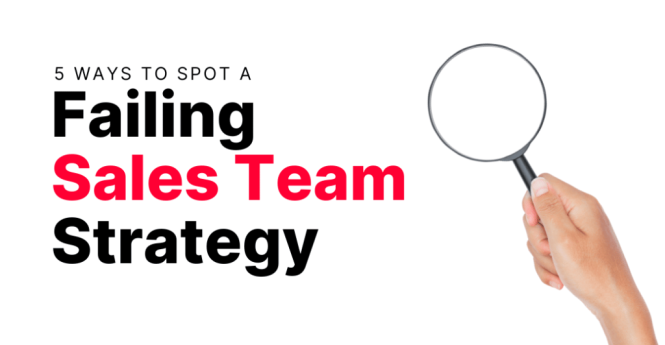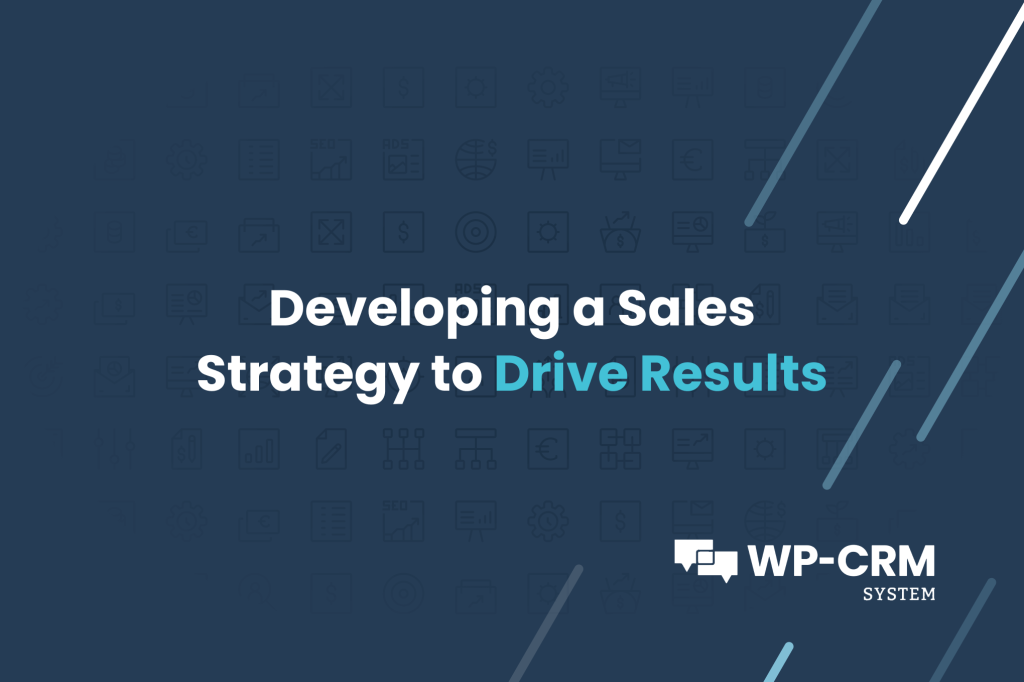

Why Your Sales Strategy Is Failing to Deliver Results and How to Revamp It
Your sales strategy is the bedrock of your business. It dictates how you connect with customers, build relationships, and ultimately drive revenue. But what if your meticulously crafted plan isn’t producing the results you expect? This comprehensive guide will delve into the common reasons why sales strategies fail and provide actionable solutions to revamp your approach, ensuring your efforts yield optimal returns.
Understanding the reasons behind failing sales strategies is crucial for crafting a more effective approach, and this guide will provide a practical and insightful overview. This article will walk you through common pitfalls, provide concrete examples of successful strategies, and offer a clear roadmap for improving your sales results.
We’ll explore everything from ineffective communication methods to flawed lead generation techniques. We’ll also dissect common mistakes in sales pipeline management and reveal how to identify and rectify them. By the end of this article, you’ll have a clear understanding of how to tailor your sales strategy to maximize your potential for revenue generation and achieving your business goals.
Identifying the Root Causes of a Failing Sales Strategy
Understanding the Gap Between Strategy and Execution
A well-defined sales strategy is essential for success, but it’s not enough on its own. Execution is just as critical. A significant gap between your sales strategy and its implementation can lead to disappointing results, regardless of how compelling the initial plan may seem. For example, a company might have a robust strategy to target millennials, but their sales team might not possess the right communication style for this demographic, which directly translates to lost opportunities.
Unaligned Sales Team and Company Culture
Internal misalignment between sales team and company culture can also lead to a breakdown in the effectiveness of your sales strategy. When the sales team doesn’t feel the support or share the values of the company culture, this can manifest as reduced motivation or even resistance to the sales strategy. Sales processes can also be negatively impacted when teams don’t adhere to the company’s overall strategies, causing inconsistencies in messaging and customer experiences, ultimately hindering sales growth.
Insufficient Market Research and Understanding of Customer Needs
Failing to conduct thorough market research and understand customer needs is a common reason for sales strategy failures. Without a comprehensive grasp of your target market, their pain points, and their buying behaviors, it’s nearly impossible to craft a sales strategy that resonates. This can result in misdirected efforts, wasted resources, and a lack of sales conversions. An example would be a company that develops a product focused on a niche market, but fails to understand its specific needs, resulting in ineffective sales messaging. Understanding market segmentation, identifying competitor strengths, and incorporating customer feedback directly into the sales process helps tailor the strategy to its intended audience.
Adapting Your Sales Messaging to Resonate with Customers
Crafting Compelling Value Propositions
Crafting compelling value propositions is paramount to a successful sales strategy. A value proposition should clearly communicate the benefits of your product or service to the customer, highlighting how it solves their problems or enhances their lives. Without a clear value proposition, potential customers may struggle to understand the value you offer, leading to low conversion rates. A compelling example would be highlighting the time-saving features of a productivity app rather than simply listing its technical specifications.
Tailoring Your Messaging Across Different Buyer Personas
It’s crucial to tailor your messaging to address the specific needs and concerns of different buyer personas. One size fits all approaches often fall short, as different customer segments respond differently to various messaging styles and tones. Understanding their specific pain points, priorities, and motivations will give you a clearer path to connecting with your target audience. A business targeting businesses might use a more data-driven and financially focused value proposition, while one targeting consumers might highlight the emotional benefits of the product or service.
Optimizing Your Sales Process and Technology
Streamlining Sales Processes for Efficiency
A streamlined sales process is crucial for maximizing efficiency and effectiveness. Identify bottlenecks and inefficiencies in your current process and implement solutions to address them. This could include automating repetitive tasks, establishing clear workflows, or improving communication channels. Effective sales process optimization leads to increased productivity and reduced time-to-close, fostering a better overall sales experience.
Leveraging CRM Systems for Effective Management
Leveraging customer relationship management (CRM) systems can significantly enhance your sales strategy. CRM systems allow you to track leads, manage customer interactions, and analyze sales data. By implementing a CRM, you can gain insights into customer behavior and tailor your sales approach accordingly, leading to higher conversion rates and customer satisfaction. Data-driven insights extracted from CRM systems will enable better forecasting and improved sales predictions. An example of a successful CRM implementation is improving lead nurturing strategies and tracking interactions from initial contact to closing a deal.
Building a Strong Sales Team and Cultivating a Positive Culture
Creating a High-Performing Sales Team
A strong sales team is instrumental for executing a successful sales strategy. Recruiting and selecting top performers, offering continuous training and development, and providing a supportive and motivating work environment are all crucial elements. By implementing comprehensive sales training programs, you can ensure that your sales team has the knowledge and skills to execute effectively and maintain their enthusiasm for closing deals.
Foster a Positive and Collaborative Sales Culture
A positive and collaborative sales culture is essential for motivation and high performance. Encouraging open communication, celebrating successes, and providing constructive feedback can significantly enhance the team’s performance and create a supportive environment for achieving shared objectives. Incentivizing sales team members and providing clear recognition for achievements are crucial elements.
Continuously Monitoring and Evaluating Sales Performance
Tracking Key Metrics for Performance Improvement
Sales performance must be tracked and analyzed regularly to identify areas for improvement. Use key performance indicators (KPIs) like conversion rates, average deal size, and customer lifetime value to assess the effectiveness of your strategy. Identify trends, patterns, and deviations from expected outcomes. Analyzing sales data will allow you to track and adjust your strategy for maximum results. An example is analyzing customer acquisition costs (CAC) to pinpoint areas needing improvement.
Adapting and Iterating Based on Data-Driven Insights
Use data-driven insights to adapt your sales strategy over time. Regularly evaluate the effectiveness of your current strategy and identify any weaknesses or areas for improvement. Iterate your processes and strategies based on these findings, and continuously enhance your sales efforts and achieve optimal results.
How can I improve my sales strategy to increase revenue?
Improving sales strategy to boost revenue requires a multifaceted approach. Firstly, optimize your sales process, making sure it’s efficient and streamlined, from lead generation to closing deals. Secondly, tailor your sales messaging to different buyer personas. Focus on clear and compelling value propositions that highlight the benefits of your products or services. Lastly, leverage technology such as CRM systems to track leads, manage customer interactions, and analyze sales data, thereby providing actionable insights.
How can I measure the effectiveness of my sales strategy?
Measuring the effectiveness of your sales strategy involves tracking key performance indicators (KPIs). Metrics like conversion rates, average deal size, and customer lifetime value will provide valuable insight into the performance of your sales efforts. Analyzing trends and patterns in these metrics helps identify areas where your strategy is working and where adjustments are needed. Reviewing data regularly and adjusting accordingly will ensure your strategy stays in line with current market needs.
What are some tools to help optimize a failing sales strategy?
There are various tools that can help optimize a failing sales strategy. Consider using CRM systems for effective lead management and customer relationship management. Marketing automation tools can automate repetitive tasks and enhance lead nurturing. Sales analytics tools offer data-driven insights into sales performance. By using these tools, you can enhance your team’s ability to close deals, gather data, and monitor progress.
What are some case studies or examples of successful sales strategy revamps?
Numerous companies have successfully revamped their sales strategies to achieve significant improvements. For instance, a software company might have shifted from a product-focused approach to a customer-centric approach, providing better tailored solutions to individual needs. By understanding customer pain points and focusing on problem-solving, the company observed significant growth. Conducting in-depth market research and adopting a more consultative approach are vital steps in revamping a failing sales strategy. Numerous other successful case studies highlight the benefits of optimizing strategies like these, allowing companies to adjust messaging and tailor approaches to diverse consumer needs.
Frequently Asked Questions
What are the most common mistakes that cause sales strategies to fail?
One of the most common reasons for sales strategy failures is a lack of clarity and alignment within the organization. Often, there’s a disconnect between the company’s overall objectives and the strategies put in place by the sales team. Another critical mistake is overlooking the importance of conducting thorough market research and understanding customer needs. Without understanding the target audience, it’s impossible to craft effective messaging that resonates and drives results. Furthermore, inconsistent communication and a lack of training among sales teams can hinder the effectiveness of any strategy. By addressing these elements, you can increase your chances of success.
In conclusion, a failing sales strategy often stems from a disconnect between your approach and the needs of your target market. Revamping your sales strategy involves a deep dive into understanding customer pain points, adapting your messaging, and continuously optimizing your tactics. By implementing the strategies outlined in this article, you’ll be well-positioned to create a sales approach that delivers results. To truly unlock the potential of your sales strategy, I encourage you to conduct a thorough self-assessment. Analyze the current performance of your sales efforts, and identify the specific areas that need improvement. Then, schedule a meeting with your sales team to brainstorm ideas for improvement, and create a robust action plan, including specific timelines and responsibilities.